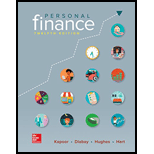
Case summary:
There were times when a person gets a decent job, he sticks to that job and all his worries about retirement planning flies away because he gets regular pension from his employer and the funds accumulated by him in the social security schemes on a regular basis. The payments he receives in the form of pension are enough for him to live his post-retirement life comfortably.
M is a salesperson of a computer company and T is an accountant of a lighting manufacturer. They both have started their jobs simultaneously at the age of 25. Currently, M has started saving for his future and is investing a sum of $300 at 9% interest rate until the age of 65 but T has not started it yet and has reached the age of 35. She started to save for his future requirement and her net savings until her age of 65 stood at $553,000 which is relatively much lower than the accumulated wealth of M which stood at $14 million.
LT is the owner and president of TE Company and tells the post retirement needs and the changes in the budget of a person after his retirement. She describes that some of the expenses like clothing for work and commuting expenses may reduce and other expenses such as insurance, travel and recreation might get increased after retirement.
Character in this case: M and T.
Adequate information:
M starts the job at the age of 25.
T starts the job at the age of 35.
Monthly saving of the M is $300.
Monthly saving of the T is $300.
M accumulation is $1.4million.
T accumulation is $553,000.
To identify:
The expense which increase and decrease during the retirement
Want to see the full answer?
Check out a sample textbook solution
Chapter 18 Solutions
Loose Leaf for Personal Finance
 Essentials Of InvestmentsFinanceISBN:9781260013924Author:Bodie, Zvi, Kane, Alex, MARCUS, Alan J.Publisher:Mcgraw-hill Education,
Essentials Of InvestmentsFinanceISBN:9781260013924Author:Bodie, Zvi, Kane, Alex, MARCUS, Alan J.Publisher:Mcgraw-hill Education,

 Foundations Of FinanceFinanceISBN:9780134897264Author:KEOWN, Arthur J., Martin, John D., PETTY, J. WilliamPublisher:Pearson,
Foundations Of FinanceFinanceISBN:9780134897264Author:KEOWN, Arthur J., Martin, John D., PETTY, J. WilliamPublisher:Pearson, Fundamentals of Financial Management (MindTap Cou...FinanceISBN:9781337395250Author:Eugene F. Brigham, Joel F. HoustonPublisher:Cengage Learning
Fundamentals of Financial Management (MindTap Cou...FinanceISBN:9781337395250Author:Eugene F. Brigham, Joel F. HoustonPublisher:Cengage Learning Corporate Finance (The Mcgraw-hill/Irwin Series i...FinanceISBN:9780077861759Author:Stephen A. Ross Franco Modigliani Professor of Financial Economics Professor, Randolph W Westerfield Robert R. Dockson Deans Chair in Bus. Admin., Jeffrey Jaffe, Bradford D Jordan ProfessorPublisher:McGraw-Hill Education
Corporate Finance (The Mcgraw-hill/Irwin Series i...FinanceISBN:9780077861759Author:Stephen A. Ross Franco Modigliani Professor of Financial Economics Professor, Randolph W Westerfield Robert R. Dockson Deans Chair in Bus. Admin., Jeffrey Jaffe, Bradford D Jordan ProfessorPublisher:McGraw-Hill Education





